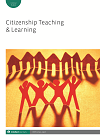
Full text loading...

This qualitative case study examines the Peace Case in its historical context and scrutinizes the complexities. Ms Butera, who became known as the ‘peace teacher’, had to deal with in the aftermath of her remark ‘I honk for peace’ in her classroom. Drawing from the fields of peace education and educational leadership and policy studies, the study aims to shed light to the dominant dynamics in the case, especially those that might be discouraging teachers to integrate the potentially controversial themes related to war and peace into their curricula. To this end, it first discusses peace education as a controversial issue and illustrates several facets of peace education that make it controversial. Following this, an analysis of a post-Garcetti case, which is known as the ‘Peace Case’, is presented. As this analysis sheds light on several implications regarding peace education as a controversial issue and teachers’ freedom of speech in the classroom, these implications are presented for teacher educators in the final section. While scrutinizing the challenging nature of present public schooling through Ms Butera’s struggles, the study uncovers the possibilities of peace education practices even in an oppressive system of schooling through robust teacher education programmes equipping teachers with powerful skills and capabilities required for transformative educators.

Article metrics loading...

Full text loading...
References


Publication Date:
https://doi.org/10.1386/ctl_00046_1 Published content will be available immediately after check-out or when it is released in case of a pre-order. Please make sure to be logged in to see all available purchase options.